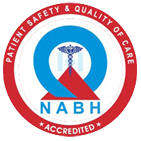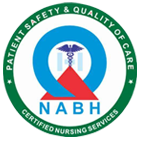FOLLOW THE MISSION HOSPITAL




An arrhythmia is any change in the regular, even rhythm of the heartbeat. If your child has an arrhythmia, his or her heart might beat too fast or too slow, or it might skip a beat or have extra beats. An arrhythmia might result from a physical condition — such as a heart defect —or in response to outside factors, such as a fever, infection, and certain medications. Even crying and playing can briefly alter a child’s heart rate.
Most arrhythmias are harmless, but some can be serious and even life-threatening. If your child’s heart beats too fast (a condition known as tachycardia), or too slow (bradycardia), it might affect the heart’s ability to pump blood efficiently to the rest of the body. Irregular blood flow can damage organs, including the kidneys, liver, heart, and brain.
The pumping action of the heart is powered by an electrical pathway that runs through the nerves in the walls of the heart. With each heartbeat, an electrical signal is generated and travels from the top of the heart to the bottom.
The signal begins in a group of cells in the right atrium (the upper right chamber of the heart) called the sinoatrial node (SA node). From there, the signal travels through special pathways to stimulate the right and left atria, causing them to contract and send blood into the ventricles (the bottom chambers of the heart).
The current continues through its circuit to another group of cells called the atrioventricular node (AV node), which is between the atria and the ventricles. From there, the electric current moves on to another pathway called the bundle of His, where the signal branches out to stimulate the right and left ventricles, causing them to contract and send blood to the lungs and the rest of the body.

When the circuit is working properly, the heart beats at a regular, smooth pace. When something interrupts the circuit, the heartbeat can become irregular, and an arrhythmia occurs.
There are many types of arrhythmias, which can grouped into three general categories: supraventricular (atrial) arrhythmias, ventricular arrhythmias, and bradyarrhythmias.
Atrial arrhythmias in children include:
Ventricular arrhythmias in children include:
Recognizing symptoms of an arrhythmia depends on the age and maturity of your child. Older children can tell you about feeling lightheaded or feeling his or her heart fluttering or "skipping beats." For infants and toddlers, you might notice changes such as paleness of the skin, irritability, and disinterest in eating. Some common symptoms of arrhythmias include:
An arrhythmia can occur as a result of internal factors, such as a disease of the heart muscle itself (cardiomyopathy) or a heart defect the child had when he or she was born (congenital heart disease). Other common causes of arrhythmia in children include:
The doctor will begin with a thorough history, including a review of symptoms, and a physical exam. He or she might order blood tests to rule out medications and infections as the cause of the arrhythmia. The doctor may do a test called an electrocardiogram (ECG), which records the heartbeat, to see if it is beating regularly. The doctor might consult a pediatric cardiologist, a doctor who specializes in children’s heart disorders.
If your child does not have symptoms of arrhythmia at the time of the ECG, the doctor might order a different type of device to record your child’s heartbeat. These include portable monitors you take home with you that continuously record your child’s heartbeat over a period of days to months. Implantable monitors that can be worn for up to a year or more are also available.
Many arrhythmias in children are isolated occurrences and harmless, and do not need treatment. In many cases, arrhythmia is treated by treating the underlying problem, such as fever.
Treatment, when needed, depends on the child’s age and the type and cause of the arrhythmia. Treatment options include:
In many cases, arrhythmias in children are harmless. However, when arrhythmias occur outside of exercise and play, occur often, or last a long time -- especially in combination with any of the symptoms listed above -- you should take your child to a health care professional.
Most arrhythmias in children are harmless and do not lead to significant health problems in the future. Even serious arrhythmias can be successfully treated. Depending on any underlying heart disease, the outlook for children with arrhythmias is positive.

A Unit Of Durgapur Medical Centre Pvt. Ltd.